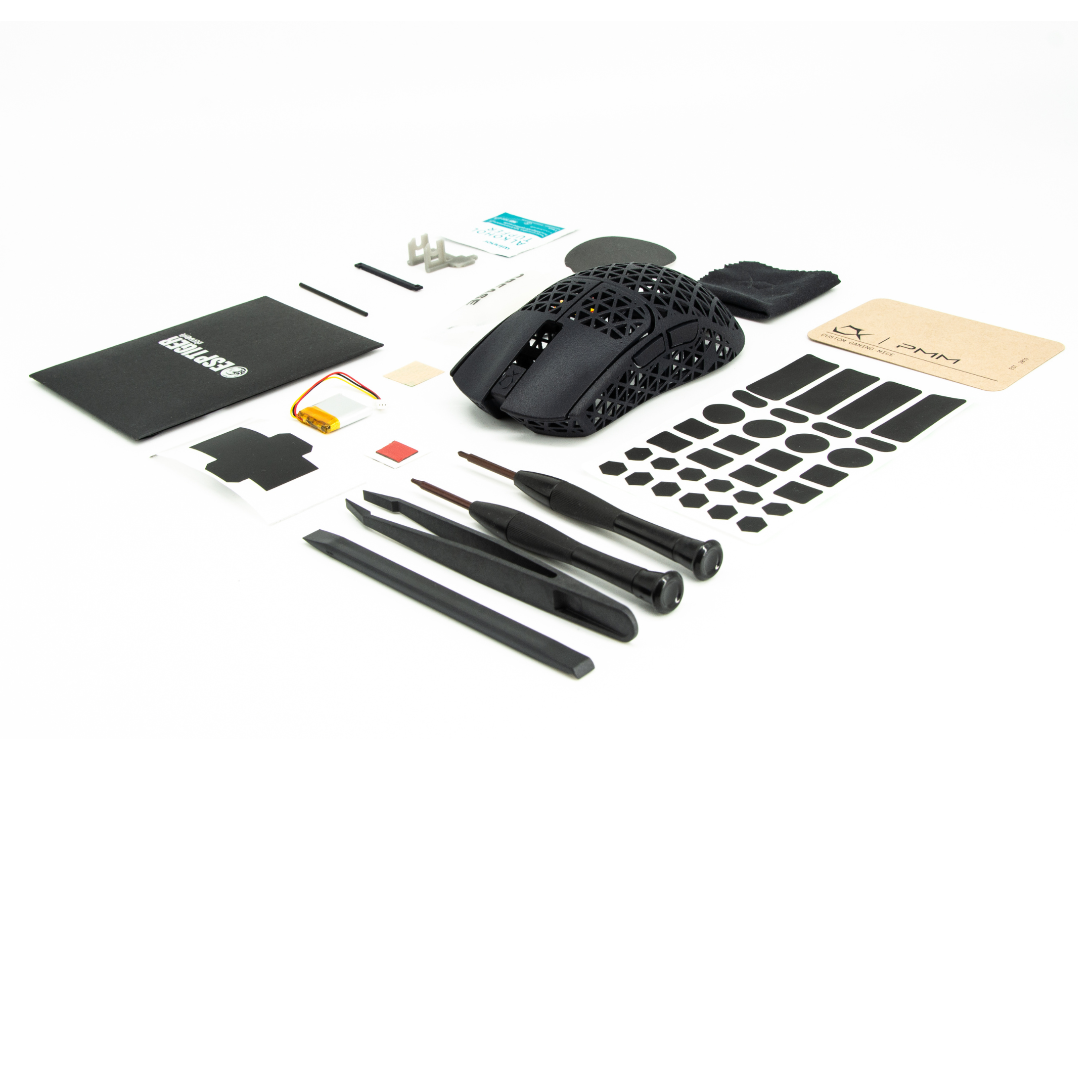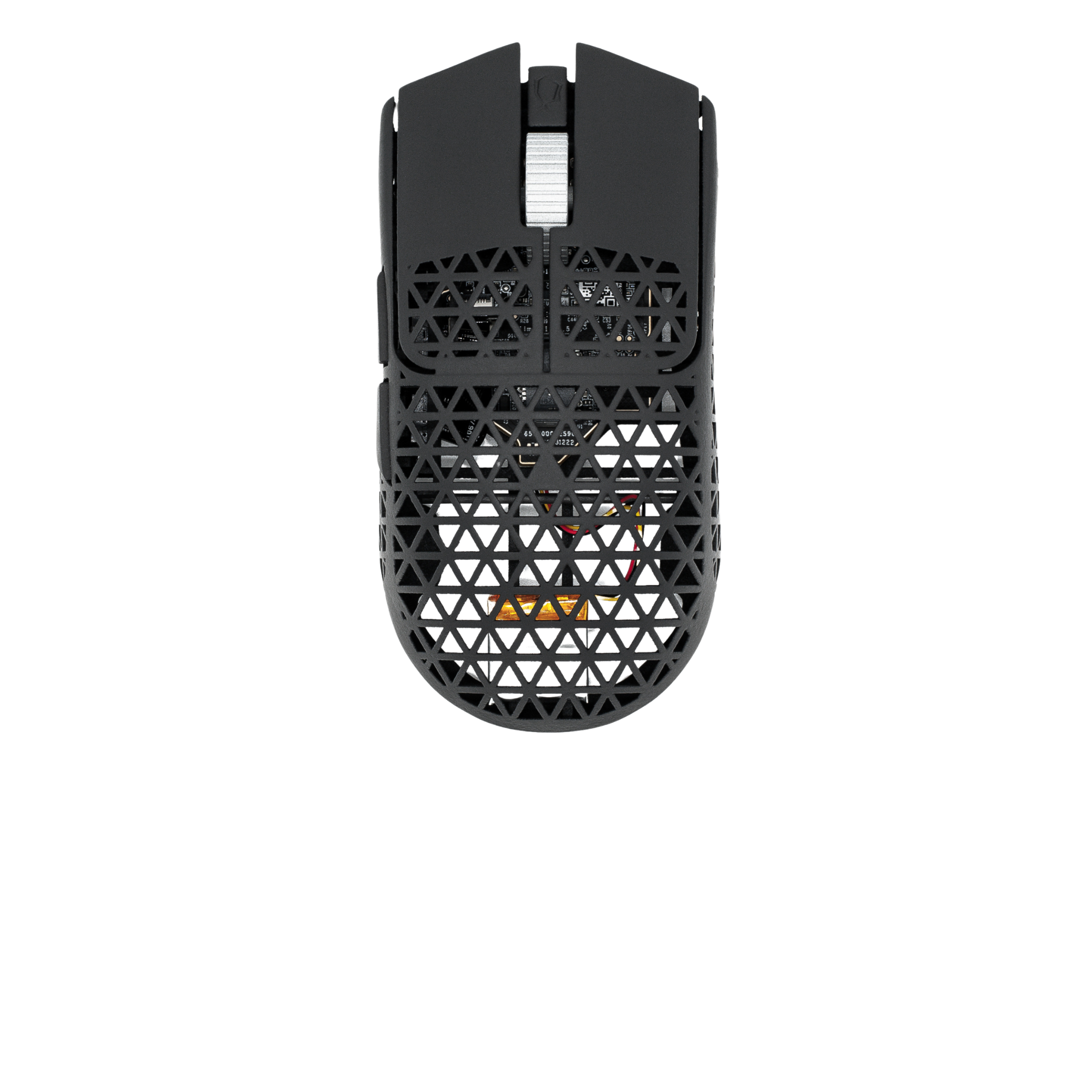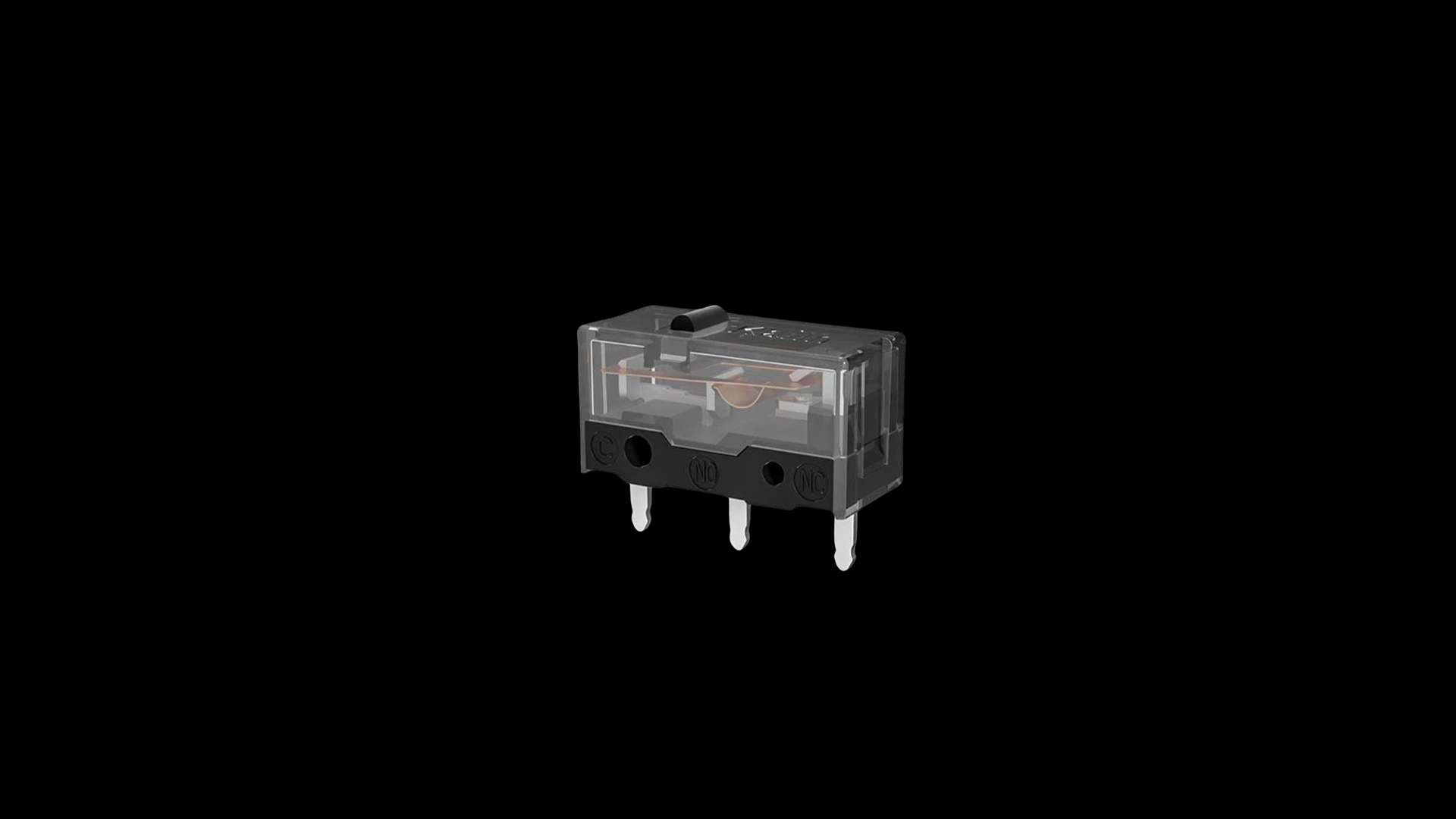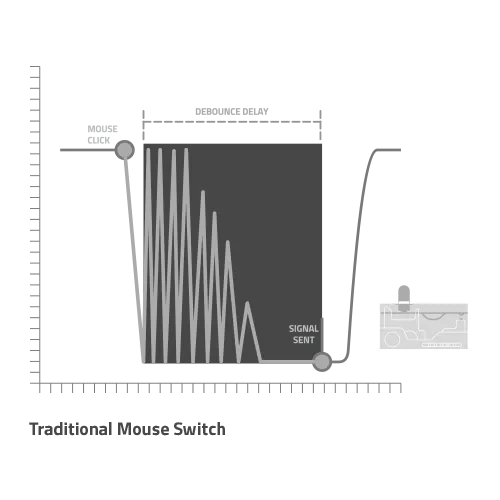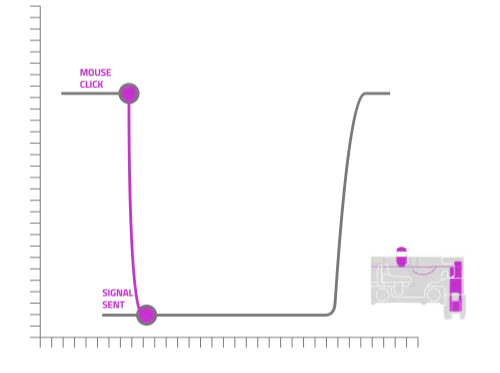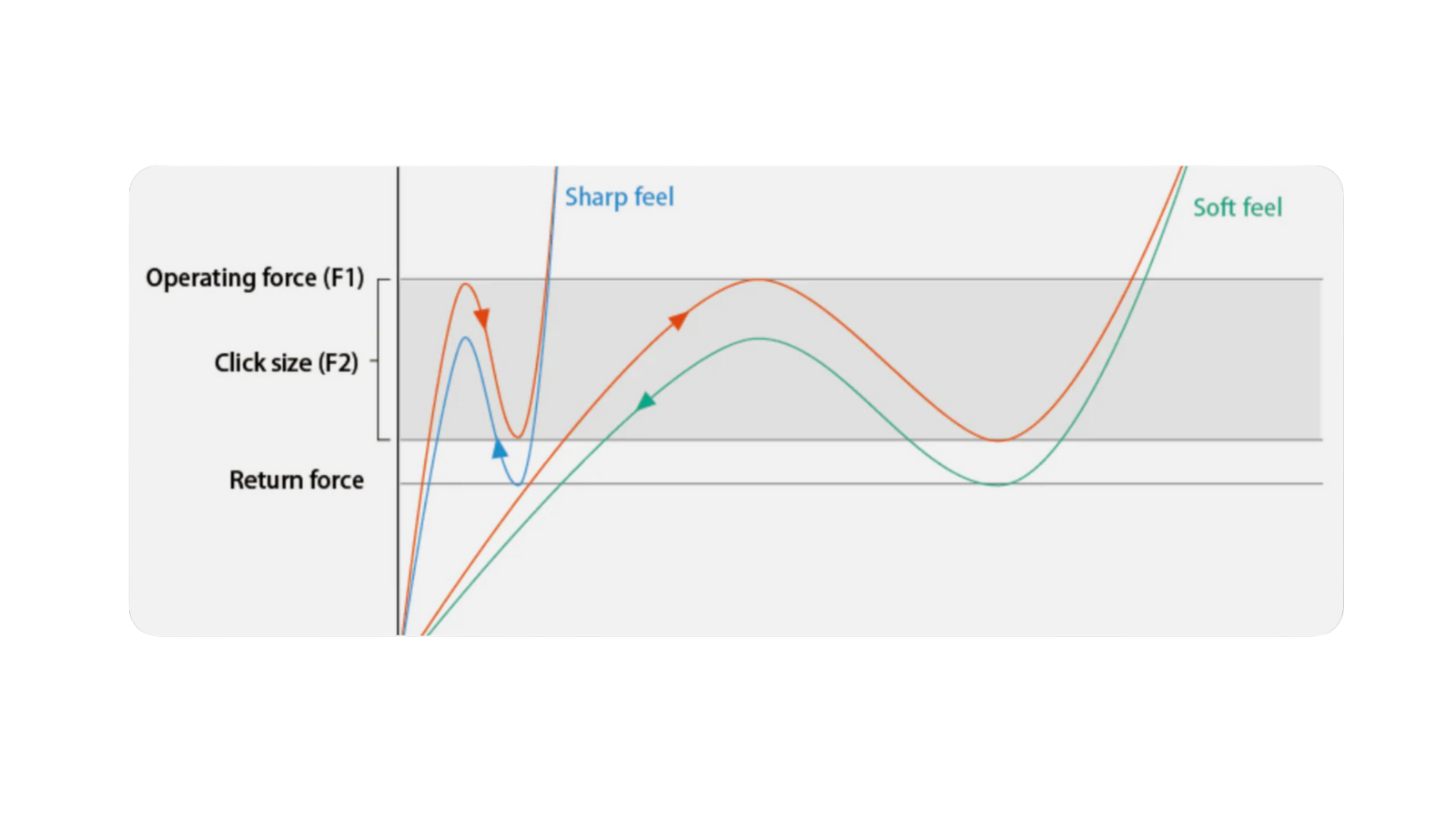Introduction
Micro Switches are small parts with mechanical and electrical functions that sit beneath the mouse buttons of every gaming mouse. For a gaming mouse enthusiast, the mouse switch is a critical component because each click or spam relies on them.
Mouse modders usually swap out these switches to get a different feel or sound from their mouse or to fix ones that are malfunctioning (like switches that double click by accident).
Each switch has its own unique characteristics. It's good to understand these differences before buying to find the best switch based on your preferences.
When you're buying microswitches or any other replacement parts, you'll need to solder them in. If you're not confident in your skills, you could damage your device. We suggest practicing on some old, broken electronics first before working on your current gear! If you want to avoid soldering on your G305 you can get a HOT-SWAP PCB here to swap the switches without soldering.
This post will provide a technical overview of mouse switches, mechanisms, and how they affect user experience.
Good to know before reading:
Double Clicking
When a single button press registers as two clicks.
Super annoying. This usually happens because of oxidized switch contacts, inconsistent voltages, or too low of a click debounce time in your mouse software.
Switch Binning
This is the process of sorting switches based on the force needed to activate them. When switches are made, they get sorted into different groups for lighter or heavier actuation forces. The tighter the binning, the more consistent the feel of switches from the same batch. This keeps you from getting two switches with very different required forces.
Double Clicking
When a single button press registers as two clicks.
Super annoying. This usually happens because of oxidized switch contacts, inconsistent voltages, or too low of a click debounce time in your mouse software.
Switch Binning
This is the process of sorting switches based on the force needed to activate them. When switches are made, they get sorted into different groups for lighter or heavier actuation forces. The tighter the binning, the more consistent the feel of switches from the same batch. This keeps you from getting two switches with very different required forces.
Plated Switches
Some microswitches have a coating on the contacts that activate the switch. This helps prevent oxidation over time and extends the lifespan of your switches. Gold plating is the most common, but you might also find silver-plated ones.
Switch Oxidation
Over time, exposure to oxygen causes switches to develop oxide layers on the contacts and pins. This can mess with conductivity and eventually lead to double clicking or switch failure.
Plated Switches
Some microswitches have a coating on the contacts that activate the switch. This helps prevent oxidation over time and extends the lifespan of your switches. Gold plating is the most common, but you might also find silver-plated ones.
Switch Oxidation
Over time, exposure to oxygen causes switches to develop oxide layers on the contacts and pins. This can mess with conductivity and eventually lead to double clicking or switch failure.
The Anatomy of a Mechanical Switch
Mouse switches are responsible for the click sound and tactile feedback felt with each press. These switches are positioned beneath the primary left and right buttons and on the side buttons. Mechanical Switches known for durability and tactile feedback, mechanical switches use physical moving parts, such as metal contacts, to register a click. This type is preferred by gamers who value the distinct sensation of each key press. Mechanical switches can further be classified based on their actuation force, such as: Light, Medium or Heavy switch.
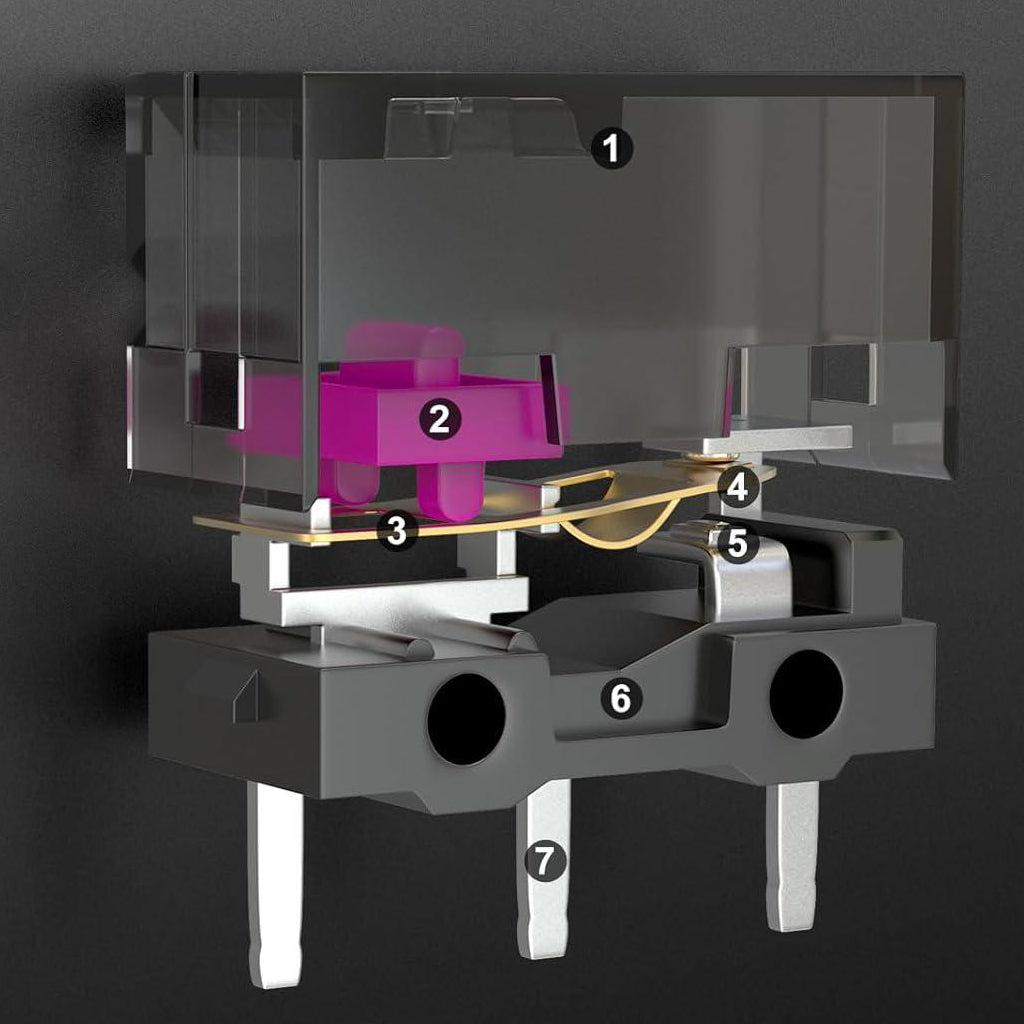
Mechanical Mouse Switch Components
- Cover: The outer shell that protects the internal parts from dust and damage. It keeps everything in place and ensures the switch works correctly.
- Switch plunger: The small plastic half-cylinder on top of a switch. When you press it, it makes the mouse click.
- Spring: A small metal plate inside the switch. When you press the switch button, the plate bends. It gives the click a nice feel and helps the switch button bounce back up when you release it.
- Contacts: Two small gold or silver pieces that touch when you click. Gold often is used because it conducts electricity well and doesn’t rust. When these pieces touch, they complete the electrical circuit to register a click.
- Grid Interface: The part that keeps all the internal components properly aligned. It ensures the switch works consistently by holding everything in the correct position.
- Base: The bottom part of the switch that holds all the components together. It acts like the foundation, providing stability and structure.
- Terminal: Metal pins that connect the switch to the mouse’s electronics. When the contacts touch, the terminals send an electrical signal to the mouse’s MCU to register the click.
These parts all work together so every click you make with your mouse is detected accurately and feels satisfying.
Mechanical Switches are being used by Logitech. This allows PMM to mod different kinds of switches in mice with G305, G603 or Superlight internals. Check it out here.
Optical Switches
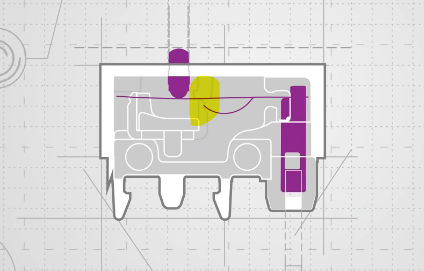
Optical switches use light beams to register clicks. These switches are considered more responsive because they lack physical components that can wear out over time. They work by interrupting an infrared light beam to actuate the switch, resulting in a more precise and faster response. One advantage of optical over mechanical switches is that they can't develop a double click and are considered to have a lower latency. The main reason is that there is no need for a debounce delay. Razer is known for their high-performing optical switches. Find more information on our Razer Mods here.
These switches are not interchangeable with mechanical switches. You can't replace mechanical switches with optical switches. If you want to replace your optical switches, you must choose optical switches with the same mounting bracket.
Measuring the Performance of Switches
When it comes to measuring the performance of a switch click, several key terms need to be understood. The operating force (OF) is the amount of pressure needed to turn the switch on, usually measured in grams (gf) or Newtons (N). The return force is what pushes the switch back to its original position after being pressed, ensuring it's ready for the next click. Travel distance refers to how far the switch moves when you press it, which affects how fast and smooth it feels. The click ratio represents the sensation you get when pressing the switch, calculated as the ratio of the force needed to get the switch to click to the force needed to keep it pressed, expressed as a percentage. The feeling curve illustrates how these factors—operating force, return force, travel distance, and click ratio—work together, showing how different switches provide different tactile experiences.
Below you can see the feeling curve.
The feeling curve graph illustrates the relationship between the force applied to the switch (Load in Newtons) and the distance the switch moves (Travel in millimeters). Here are the key factors depicted on the curve:
Operating Force (F1): This is the initial force required to actuate, or turn on, the switch. On the graph, it’s where the curve begins to rise sharply.
Click Size (F2): This represents the peak force experienced during the click. It’s the highest point on the curve before it starts to drop off.
Return Force: This is the force needed for the switch to return to its original position after being pressed. On the graph, it's indicated by the decline in the curve back towards the baseline.
The click ratio helps quantify the switch's feel. It is the ratio of the operating force (F1) to the click size (F2), expressed as a percentage. A higher click ratio indicates a sharper feel (as seen with a steeper, more pronounced peak in the curve), while a lower click ratio suggests a softer feel (with a more gradual, less pronounced peak).
In the graph, you can see different curves representing various switch types. The sharp feel curve rises quickly to a high peak and then falls off sharply, indicating a high click ratio. In contrast, the soft feel curve has a more gradual rise and fall, indicating a lower click ratio.
Recommended Switches
The responsiveness and durability of your switches significantly impact gaming performance. Below are some of the top gaming mouse switches, their features, and how they enhance gaming experience.
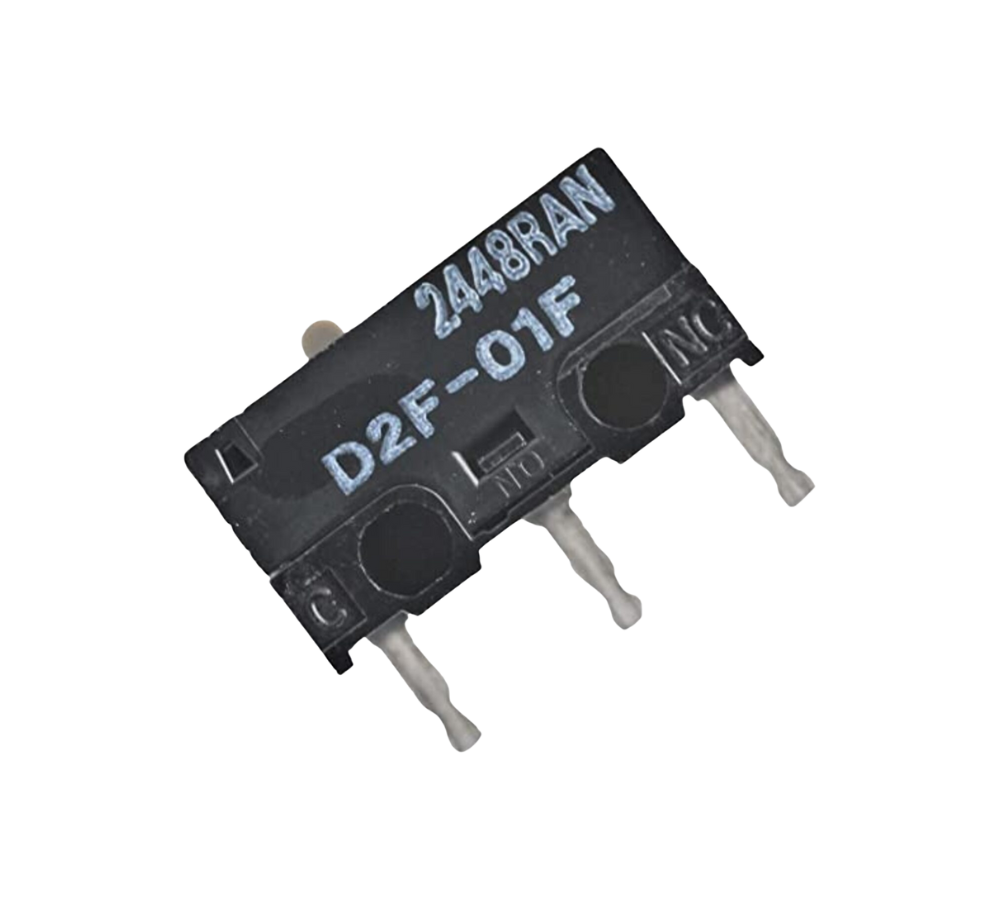
The Lightest Click
Japanese Omron D2F-01F
Operating Force (OF): 55 grams
Click Lifespan: 10 million clicks
Feel: Light
Omrons manufactured in Japan! These switches from Omron have a light click feeling and come with gold plating on the switch contacts for better durability. These are probably the lightest switches that we have. These switches are manufactured with a slightly taller switch plunger compared to regular switches. Because of this, they are not compatible with all mice. Make sure that your device can use these before buying!
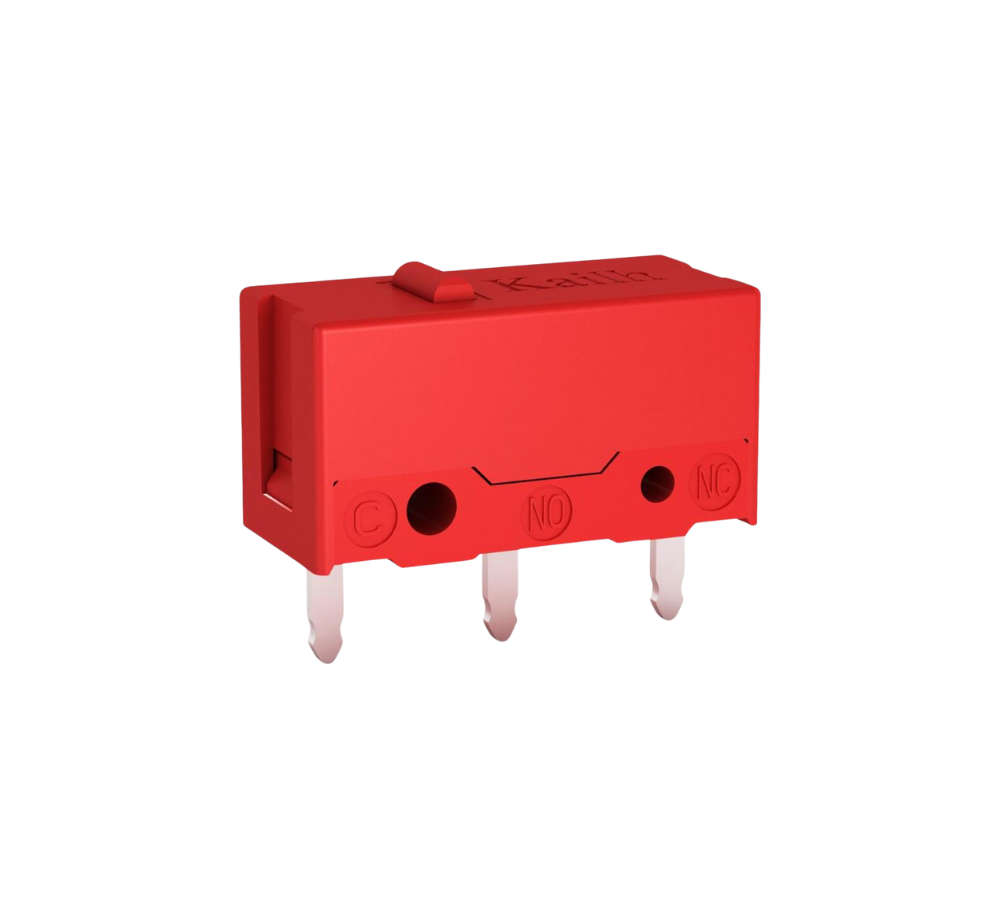
Crisp and Tactile
Kailh Red GM 4.0
Operating Force (OF): 70 grams
Click Lifespan: 60 million clicks
Feel: Heavy
The Kailh Red GM 4.0 switch is known for its heavy, tactile feel and crisp sound. With an operating force of 70 grams, it provides a satisfying click. The gold-plated contacts ensure high sensitivity and reliability, with a lifespan of 60 million clicks.
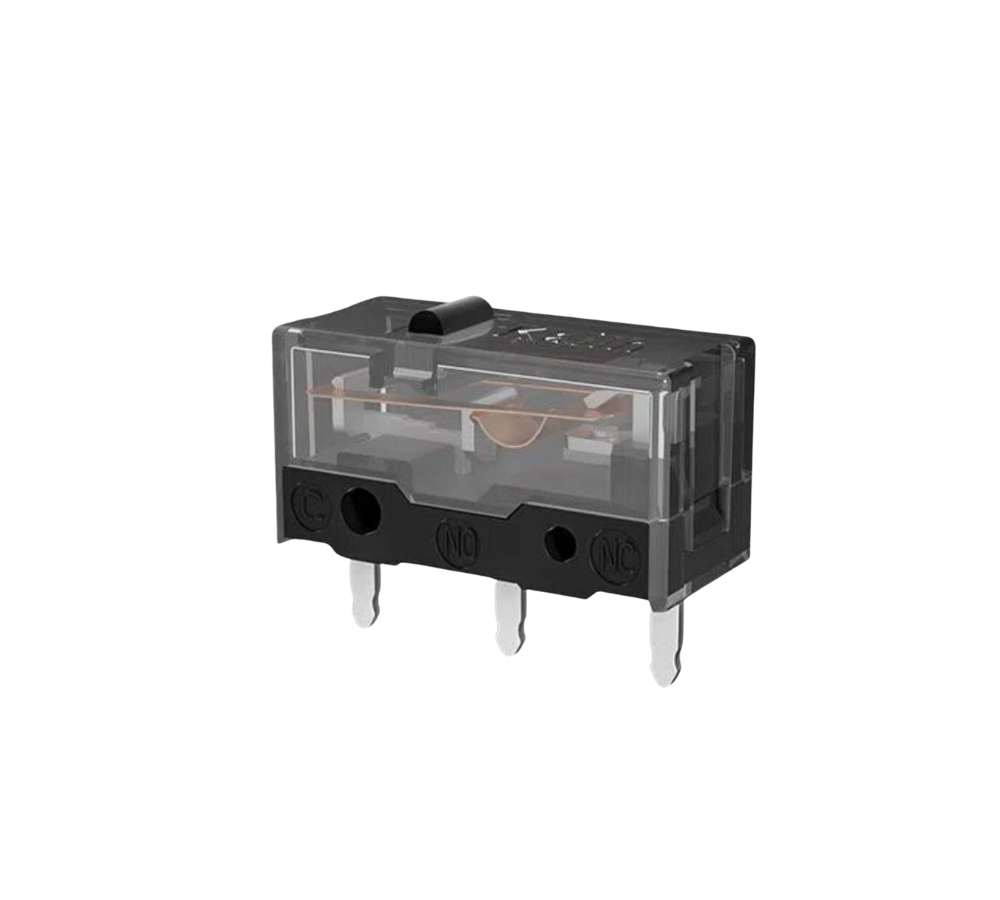
Precision and Medium Feel
Kailh Black GM 8.0
Operating Force (OF): 65 grams
Click Lifespan: 80 million clicks
Feel: Medium
These switches are ideal for those who enjoy strong tactile feedback and an audible click. However, they might not be the best option for rapid clicking or quiet environments. Still, they are the most durable of all the GM series switches.
The Kailh Black GM 8.0 switch is designed for precise actuation with an operating force of 65 grams and a lifespan of 80 million clicks. Its gold-plated contacts and 1.8mm actuation distance ensure quick and accurate responses, suitable for fast-paced games.
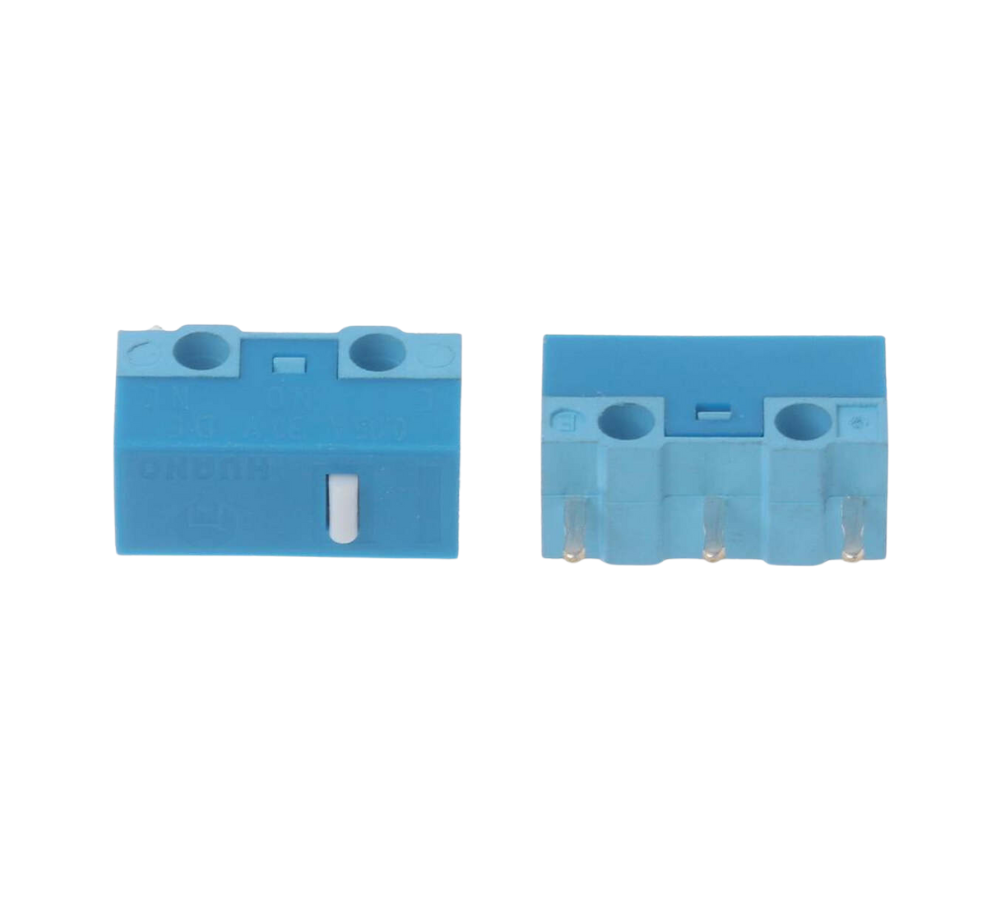
Snappy
Huano Blue White Dot
Operating Force (OF): 70 grams
Click Lifespan: 20 million clicks
Feel: Heavy to medium
The Huano Blue Shell White Dot switch offers a heavy tactile feel with an operating force of 70 grams. Its silver-plated contacts support a lifespan of 20 million clicks.
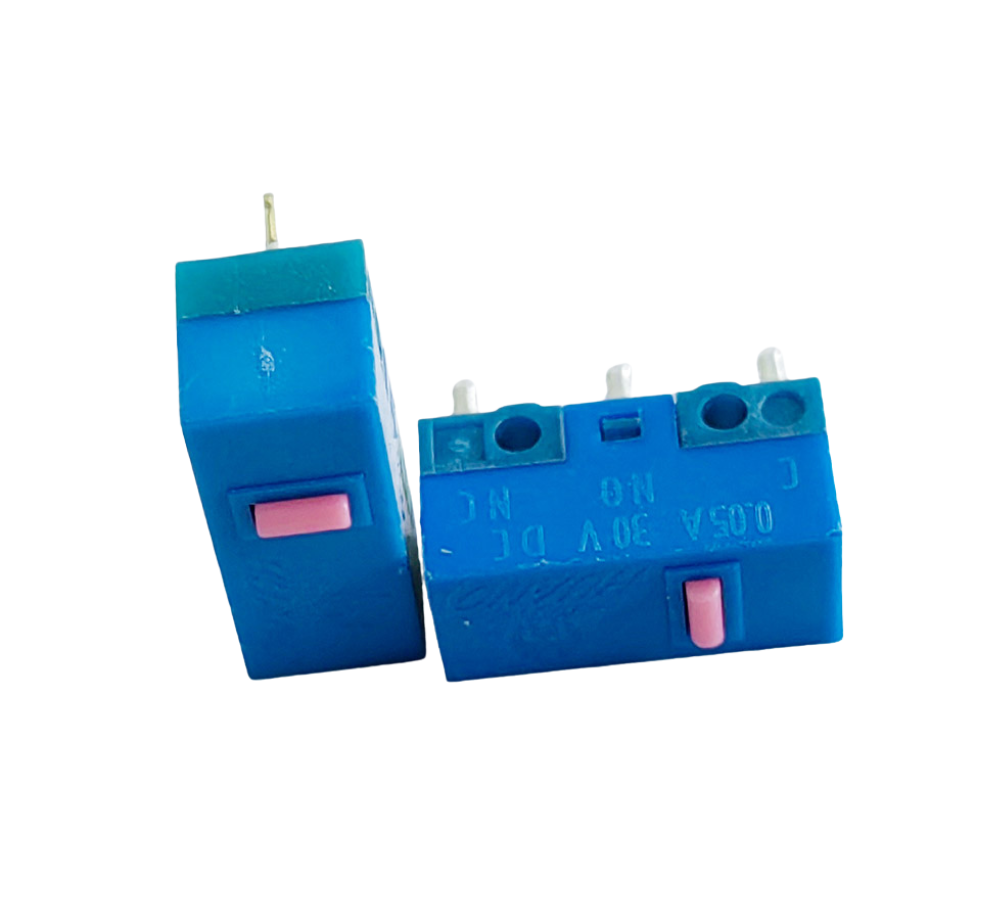
Heavy and Tactile
Huano Blue Shell Pink Dot
Operating Force (OF): 70 grams
Click Lifespan: 80 million clicks
Feel: Heavy
The Huano Blue Shell Pink Dot switch offers a heavy tactile feel with an operating force of 70 grams. Its gold-plated contacts provide excellent conductivity and durability, supporting a lifespan of 80 million clicks. This switch is favored for its precise click and durability.
PMM can solder each of the above switches into your favorite mouse.
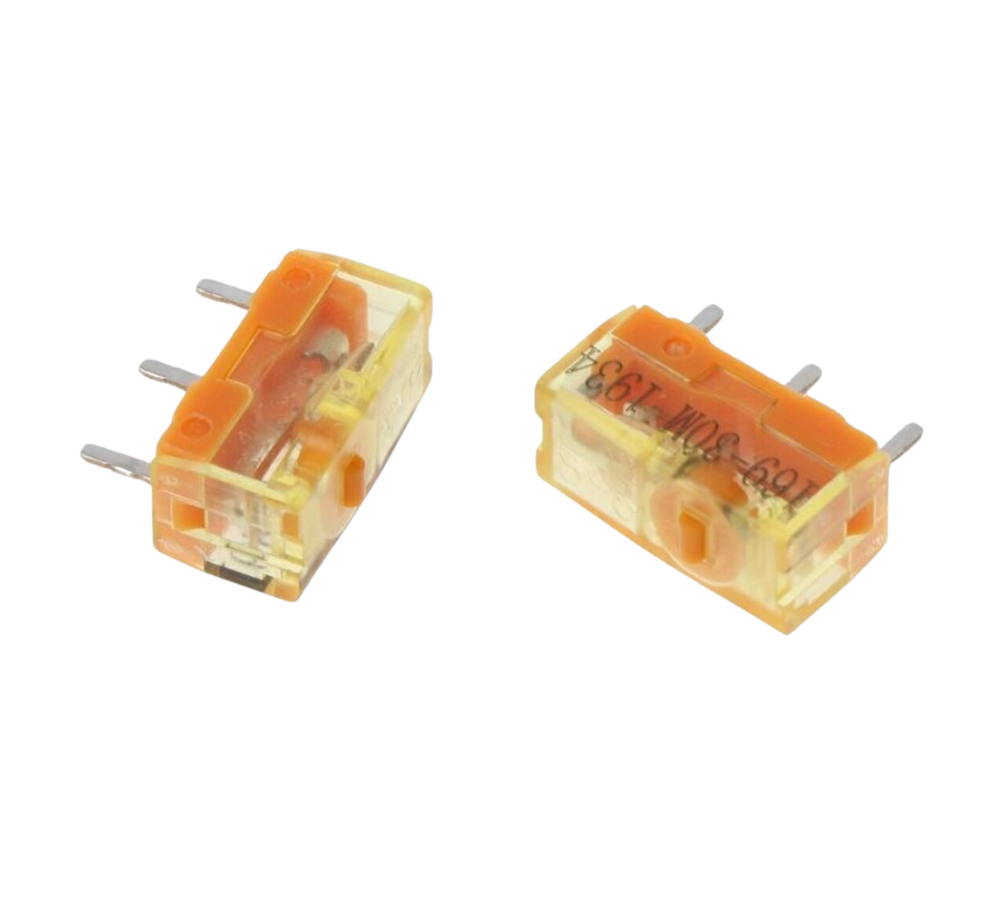
Durability and Medium-Heavy Feel
TTC Gold 80M
Operating Force (OF): 60 grams
Click Lifespan: 80 million clicks
Feel: Medium-Heavy
The TTC Gold 80M switch offers a medium-heavy tactile feel and an lifespan of 80 million clicks. Its gold-plated contacts enhance durability and reliability, making it suitable for gamers who prefer a more tactile experience. These aren't the best option if you like strong feedback.
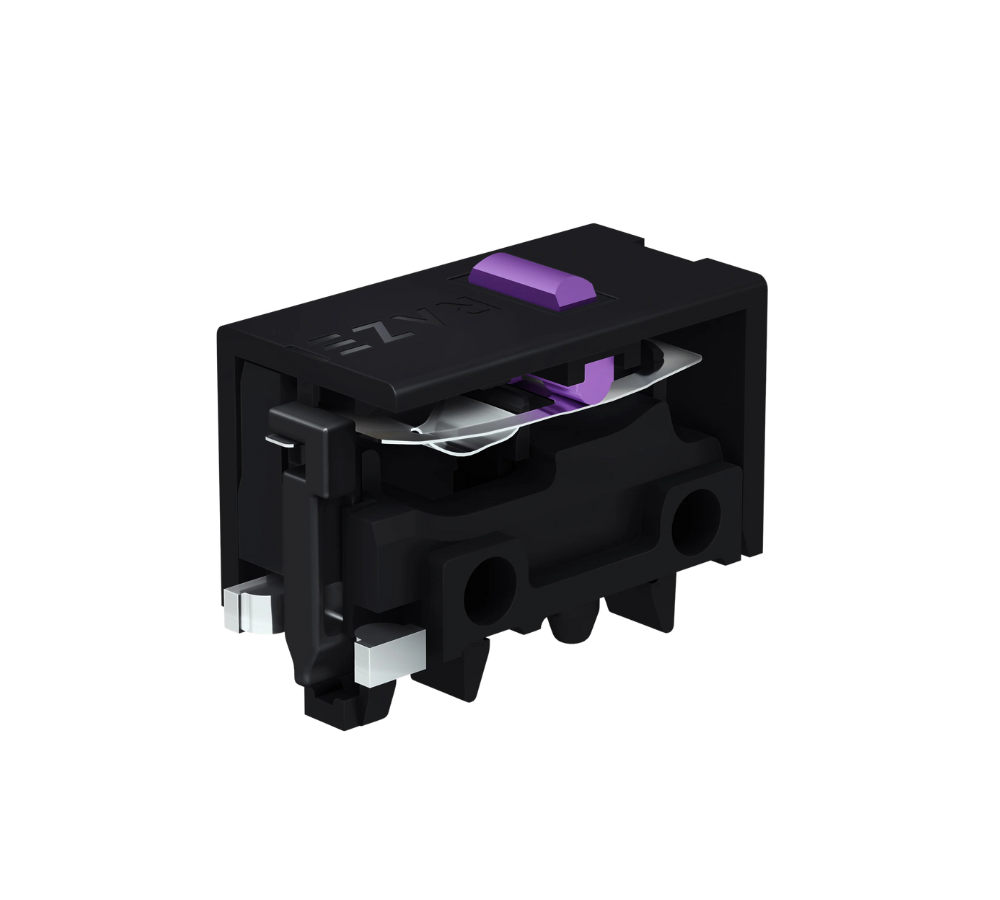
Optical switch
Optical Mouse Switches Gen-3
Operating Force (OF): 60 grams
Click Lifespan: 90 million clicks
Feel: Medium
With the Razer Optical Mouse Switch, no physical contact is needed to send an electrical signal, eliminating the need for a debounce delay. Any click is actuated instantly with no unintended clicks.
PMM can solder each of the above switches into your favorite mouse.

